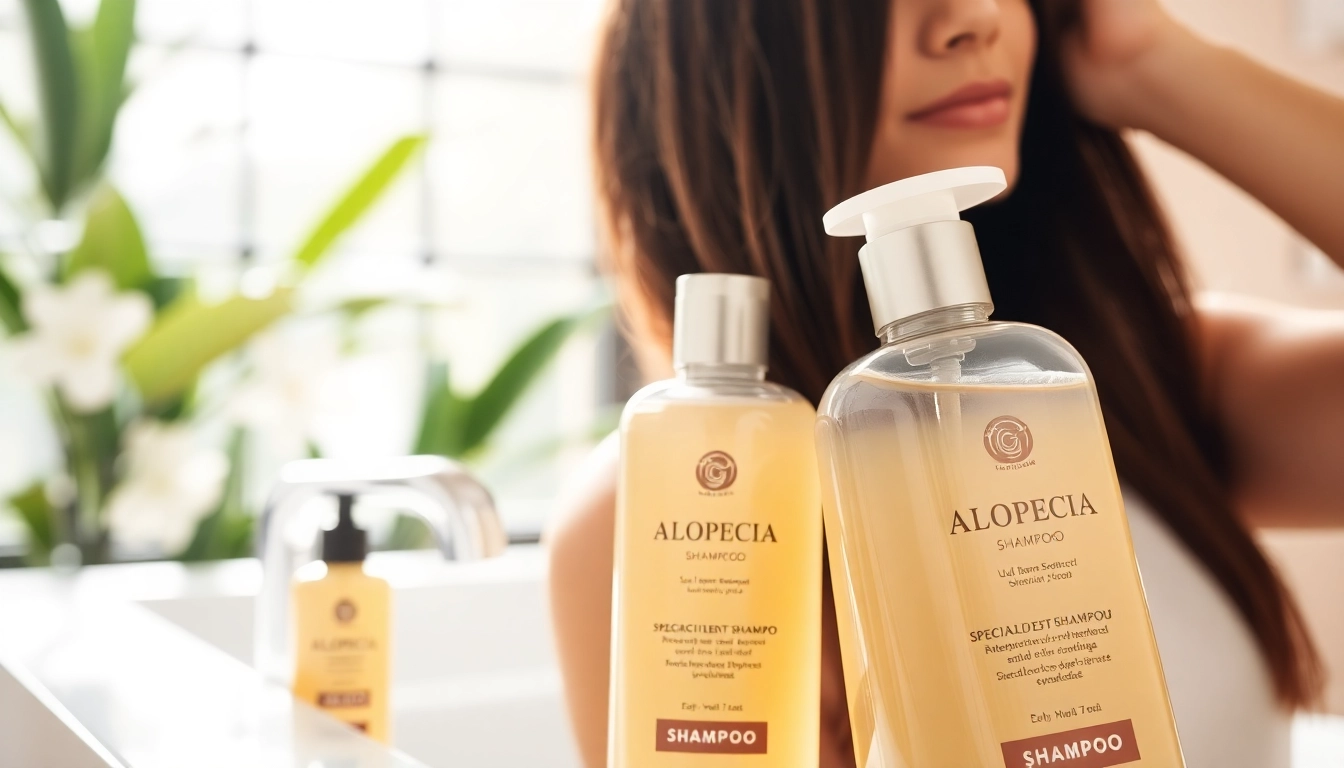Understanding Alopecia
What is Alopecia?
Alopecia refers to a common condition that leads to hair loss, impacting individuals of all ages, genders, and backgrounds. The term itself is derived from the Greek word “alopex,” which means “fox,” likely referencing the way a fox sheds its fur. There are various forms of alopecia, ranging from localized patches of hair loss to complete baldness. This condition is not merely a cosmetic issue; it can also affect mental well-being, self-esteem, and social interactions. Understanding what alopecia is and how it arises is crucial for effective treatment and management.
Types of Alopecia
There are several types of alopecia, each with distinct characteristics:
- Alopecia Areata: An autoimmune disorder that leads to sudden hair loss in patches. It can affect the scalp as well as other areas of the body.
- Alopecia Totalis: This is a more severe form where all hair on the scalp is lost.
- Alopecia Universalis: The most extensive form results in complete hair loss across the entire body.
- Androgenetic Alopecia: Commonly known as male or female pattern baldness, it typically occurs due to genetic factors and hormone levels.
- Telogen Effluvium: This temporary hair loss happens after a stressful event, illness, or hormonal changes, causing hair to shed more than usual.
- Cicatricial Alopecia: A rare form that involves inflammation of hair follicles, causing scar tissue and permanent hair loss.
Common Symptoms and Diagnosis
The symptoms of alopecia can vary widely depending on the type. Common signs include:
- Sudden hair loss in patches
- Thinning of hair or bald spots
- Changes in nail texture
Diagnosis typically involves a comprehensive examination by a dermatologist, who may perform a biopsy or blood tests to rule out other conditions. Understanding these factors is vital for determining the best course of action for treatment.
The Role of Shampoo in Alopecia Treatment
How Shampoo Affects Hair Health
Shampoo serves not merely as a cleansing agent; it plays a significant role in maintaining overall hair health. The right shampoo can nourish hair follicles, provide hydration, and help reduce scalp irritation—all critical factors for individuals dealing with alopecia. Conversely, harsh detergents found in some commercial shampoos can exacerbate hair loss by stripping away natural oils and causing inflammation of the scalp. It is essential to choose shampoos designed with hair health in mind, taking into consideration their ingredients, pH balance, and moisture retention capabilities.
Ingredients to Look For in Alopecia Shampoos
Selecting a suitable shampoo for alopecia means understanding the beneficial ingredients it might contain. Here are some essential components to look for:
- Biotin: Known as Vitamin B7, biotin promotes healthy hair growth and strengthens existing hair strands.
- Niacin: This B-vitamin helps improve blood circulation to the scalp, potentially stimulating hair growth.
- Plant Extracts: Natural extracts like saw palmetto, green tea, and pumpkin seed oil are known for their anti-inflammatory and hair-boosting properties.
- Essential Oils: Oils like rosemary and peppermint may enhance blood flow to hair follicles and promote thicker hair.
- Keratin: This protective protein helps restore hair strength and longevity, essential for those experiencing thinning hair.
Shampoos to Avoid When Dealing with Alopecia
While looking for beneficial ingredients, it’s equally important to steer clear of certain components that could worsen hair loss or irritation. Consider avoiding shampoos containing:
- Sulfates: These harsh chemicals can strip away natural oils and cause dryness, leading to increased hair fall.
- Parabens: Used as preservatives, parabens can aggravate scalp irritation and have been linked to hormone disruption.
- Alcohol: Often found in volumizing shampoos, alcohol can dry out both hair and scalp.
Top Shampoos for Alopecia: A Comparison
Natural vs. Commercial Alopecia Shampoos
The debate between natural and commercial shampoos is a vital consideration for those looking for solutions to alopecia. Natural shampoos often contain fewer synthetic chemicals and focus on herbal extracts, which may be gentler on the scalp. These formulations may be particularly beneficial for individuals with sensitive skin.
On the other hand, some commercial shampoos are scientifically formulated to target specific issues like thinning hair and alopecia. They may contain FDA-approved ingredients such as minoxidil that actively promote hair growth. Ultimately, the decision between natural and commercial options often comes down to personal preference, skin sensitivity, and specific hair needs.
Brand Reviews and Recommendations
The market is flooded with various shampoos claiming to aid hair regrowth. Here are some brands that have garnered positive feedback:
- Nioxin: Known for its advanced thinning hair solutions, Nioxin offers a variety of products that cleanse and nourish hair while boosting density.
- Kerastase: Their specific line designed for thinning hair focuses on restoring hair health and density.
- Burt’s Bees: Their all-natural formulas promote healthy living while being gentle on the hair.
How to Choose the Best Shampoo for Your Needs
Choosing the right shampoo for alopecia can be overwhelming. However, following these steps can simplify the process:
- Identify Your Hair Type: Whether your hair is oily, dry, or normal can influence which shampoo is best.
- Assess Your Scalp Health: Identify any existing conditions like dandruff, sensitivity, or itchiness.
- Read Labels Carefully: Look for scientifically proven ingredients that target alopecia.
- Consider Recommendations: Seek professional advice from a dermatologist or trichologist to guide your choices.
Best Practices for Hair Care with Alopecia
Daily Hair Care Routine
A daily hair care routine that prioritizes gentle handling of hair can benefit those experiencing alopecia. Here are some practical steps to follow:
- Gentle Washing: Wash your hair with a mild, sulfate-free shampoo two to three times a week.
- Condition Regularly: Use a conditioner after shampooing to maintain moisture and prevent breakage.
- Avoid Heat: Limit the use of heat styling tools that can weaken hair.
- Trim Regularly: Regular trims can prevent split ends and keep hair looking healthy.
Complementary Treatments for Alopecia
In addition to using specialized shampoos, complementary treatments can be beneficial. Options include:
- Minoxidil: A topical treatment often used for hair loss, this FDA-approved medication can promote regrowth.
- Platelet-Rich Plasma (PRP) Therapy: A medical treatment where your own blood is processed and injected into the scalp to stimulate hair growth.
- Diet and Supplements: Maintaining a balanced diet rich in vitamins and minerals, including iron, zinc, and omega-3 fatty acids, can support hair growth.
Consulting with Professionals
Consulting professionals like dermatologists or trichologists is essential when dealing with alopecia. They can offer tailored advice based on your specific condition, help identify underlying causes, and suggest personalized treatment plans, including non-prescription options available online such as shampoo for alopecia.
Real-Life Results: Testimonials and Case Studies
Success Stories with Shampoo for Alopecia
Personal accounts and testimonials can provide insight into the effectiveness of specific shampoos. Many users report a noticeable improvement in hair density and overall scalp health after using specialized shampoos. One notable case involved a 32-year-old male who experienced significant alopecia areata. After incorporating a biotin-infused shampoo and following a routine that included a balanced diet and stress management techniques, he observed considerable regrowth within six months.
Expert Opinions on Treatment Outcomes
Experts generally agree that while shampoos can support scalp health and hair growth, they work best in conjunction with other treatments. Dermatologist Dr. Emily Johnson states, “For individuals facing alopecia, choosing the right shampoo can indeed make a positive difference. However, it’s crucial to approach treatment holistically for optimal results.”
Measuring Your Hair Growth Progress
Tracking progress is an essential part of managing alopecia. Regularly taking photos, measuring hair thickness, and noting how often you lose hair strands can serve as indicators of treatment efficacy. Maintaining a journal of changes can help both you and your dermatologist in assessing the effectiveness of selected shampoos and other treatments.




